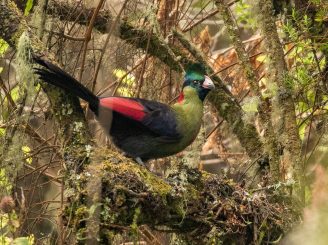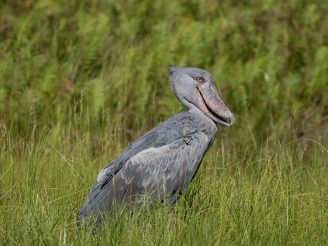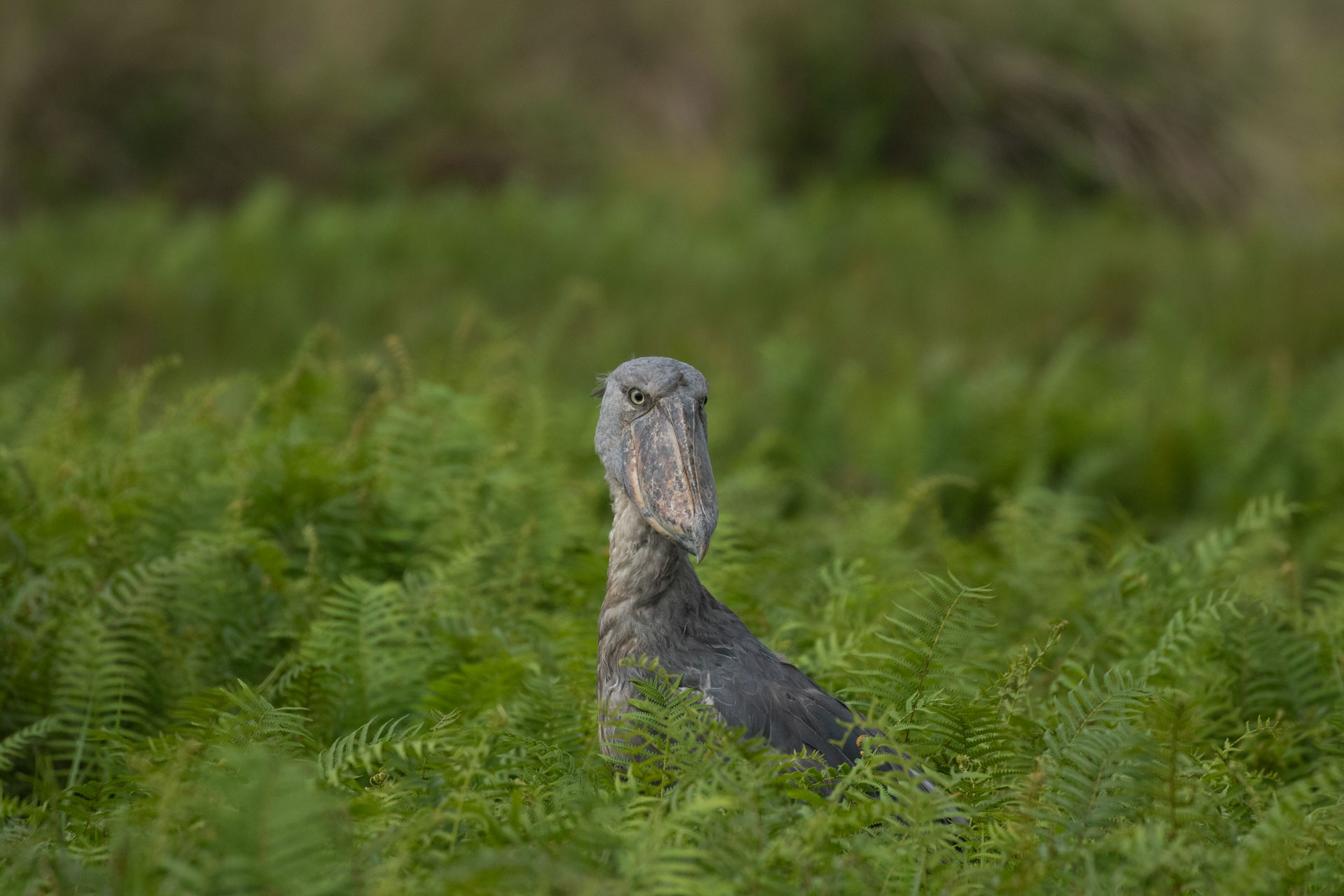
Uganda is often called
The “Pearl of Africa,” but for birders, it’s much more — it’s a paradise alive with songs, colours, and wings. This small East African country has more than 1,090 bird species, making it one of the richest birding destinations in the world.
Whether you’re a seasoned birder chasing rare endemics or a beginner eager to spot your first Shoebill, Uganda offers endless possibilities. Its varied landscapes — from tropical forests to open savannahs and mountain slopes — provide homes to birds found nowhere else.
In this detailed guide, we’ll take you through everything you need to know about birding safaris in Uganda — the best destinations, bird species to look for, the perfect time to visit, and tips to make your trip unforgettable.
Why Choose Uganda for Birding Safaris
Uganda is special because it combines species from East, Central, and West Africa in one country. You don’t need to travel far between ecosystems — in one day, you can move from wetlands to forests to savannah.
The country’s location along the Equator and the Albertine Rift gives it a mix of habitats that attract resident, migratory, and endemic birds. Uganda is home to the Fox’s Weaver, the country’s only endemic bird, and the legendary Shoebill, which every birder dreams to see.
Other attractions like gorilla trekking and wildlife safaris make Uganda a one-stop destination for nature lovers.
Top Birding Destinations in Uganda
Uganda, often called the “Pearl of Africa,” is a birdwatcher’s paradise blessed with over 1,090 recorded bird species—making it one of the richest birding destinations on the African continent. From lush rainforests to sweeping savannahs, misty mountains to papyrus-lined wetlands, every corner of Uganda offers a unique birding experience. Whether you’re a serious birder or a nature lover hoping to spot colorful birds while on safari, Uganda’s diverse landscapes guarantee unforgettable sightings.
Below are the top birding destinations in Uganda, each offering something truly special.
Mabamba Swamp (Entebbe) – The Kingdom of the Shoebill
Just a short drive from Entebbe town lies Mabamba Swamp, one of Uganda’s most famous birding sites and the best place in East Africa to see the iconic Shoebill (Balaeniceps rex). This prehistoric-looking bird is every birder’s dream, known for its huge shoe-shaped bill and calm, statue-like stance while hunting fish.
Birding in Mabamba is done by canoe, gliding quietly through a maze of papyrus channels. Along the way, you can spot other remarkable waterbirds such as the African Jacana, Malachite Kingfisher, African Pygmy Goose, Purple Swamphen, Goliath Heron, and Blue-breasted Bee-eater.
The swamp’s proximity to Entebbe International Airport makes it an ideal first or last stop on any Ugandan birding tour. A morning visit here almost guarantees you a Shoebill sighting—an unforgettable start to your journey.
Bwindi Impenetrable Forest – A Haven for Albertine Rift Endemics
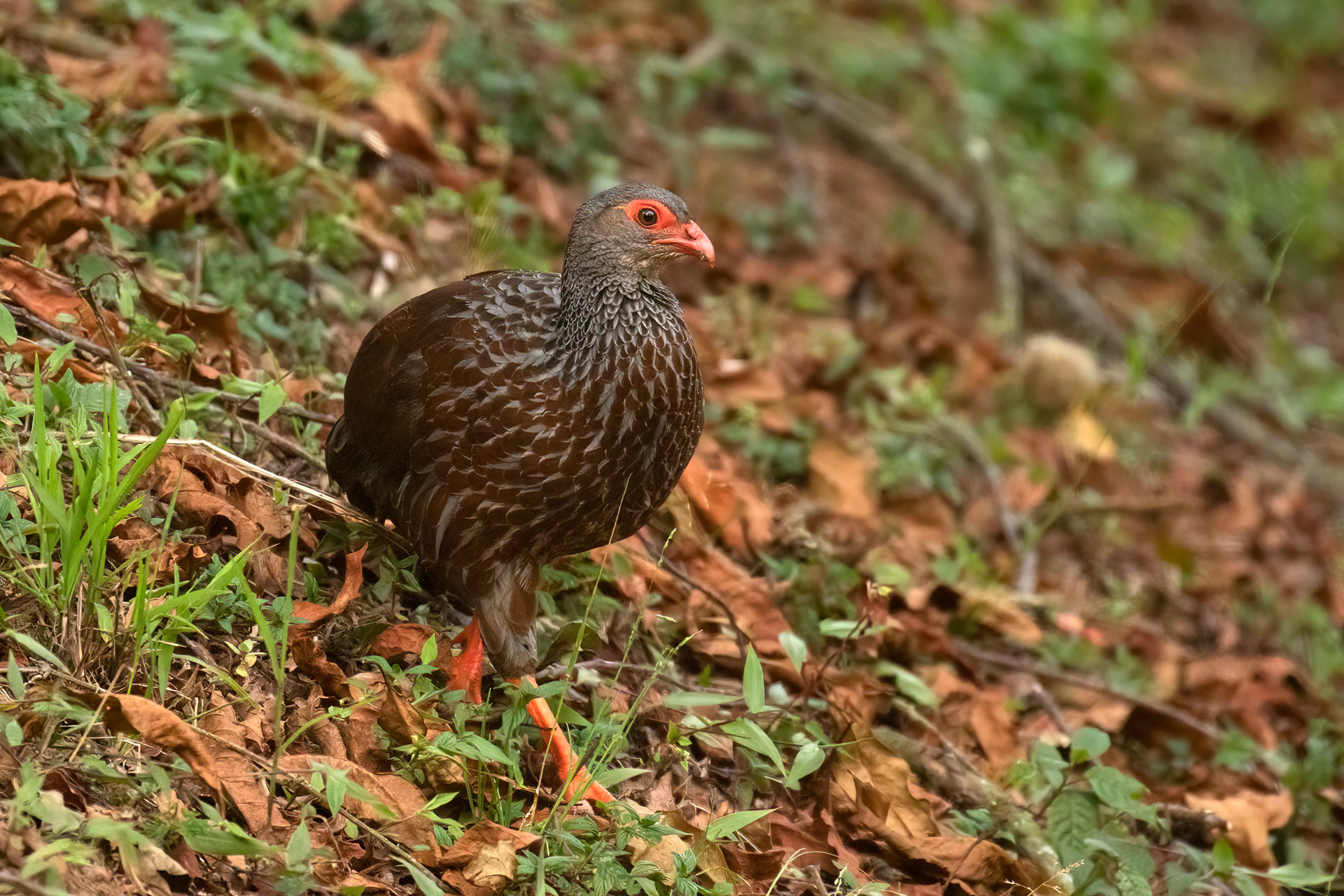
Deep in the southwestern corner of Uganda lies Bwindi Impenetrable National Park, a UNESCO World Heritage Site and one of Africa’s richest forests for both wildlife and birds. Bwindi is famous for its Mountain Gorillas, but it is equally exceptional for birding. The forest shelters over 350 bird species, including 23 Albertine Rift endemics—species found nowhere else in the world.
Among its star birds are the African Green Broadbill, Shelley’s Crimsonwing, Handsome Francolin, Black-billed Turaco, and Grauer’s Rush Warbler. The park’s diverse habitats—ranging from montane forest to bamboo zones—offer endless opportunities to explore and photograph unique species.
Bwindi’s birding trails, especially Buhoma, Ruhija, and Nkuringo, are rich with activity. Birders can spend several days here, combining gorilla trekking with forest birding, for one of the most rewarding wildlife experiences in Africa.
Murchison Falls National Park – Raptors, Waterbirds, and the Nile
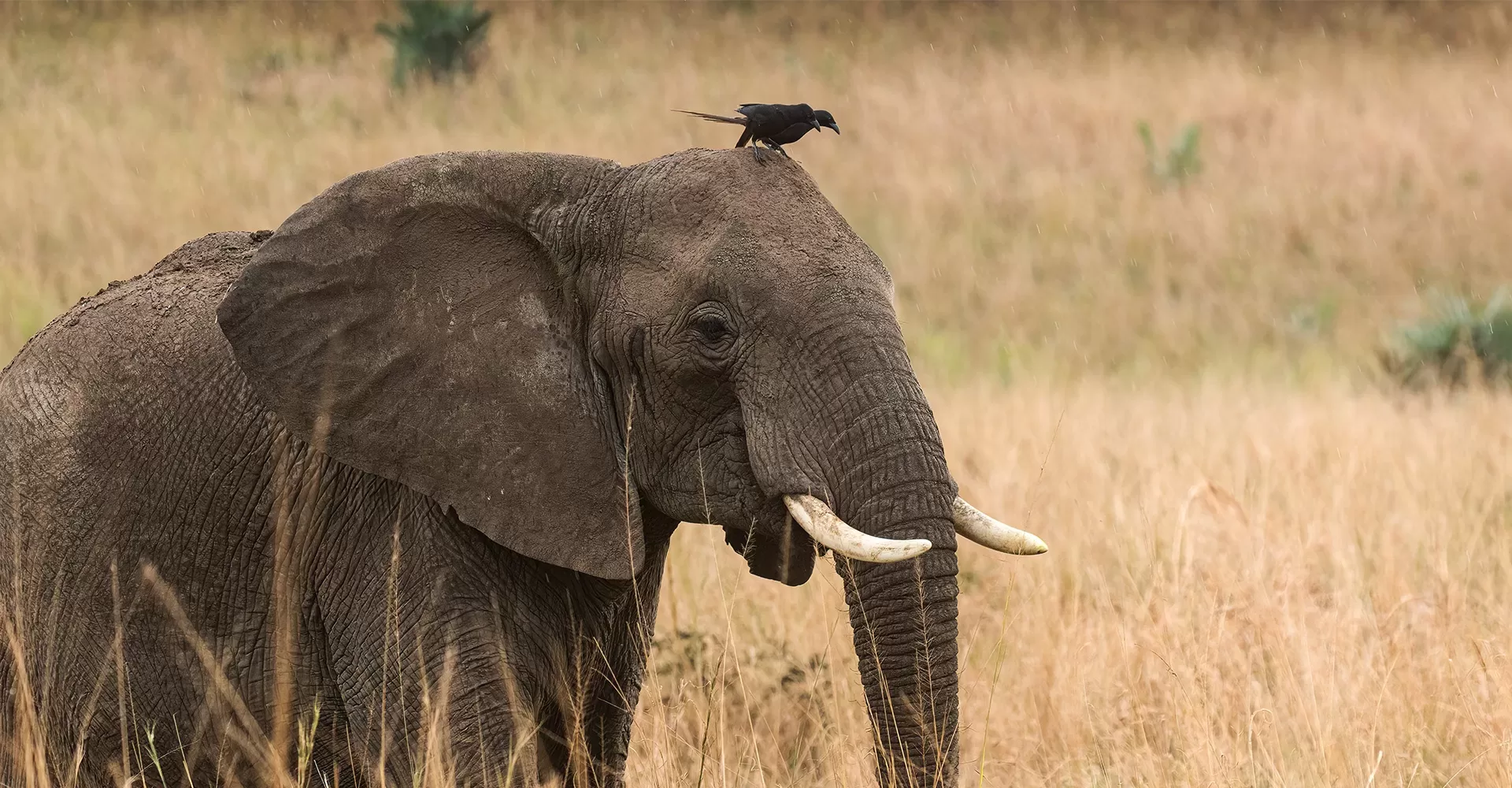
Uganda’s largest national park, Murchison Falls National Park, offers an incredible mix of landscapes and bird habitats. From the thundering Murchison Falls—where the Nile River squeezes through a narrow gorge—to vast grasslands, riverine woodlands, and wetlands, birdlife thrives everywhere.
Over 450 bird species have been recorded here, including the Shoebill, Abyssinian Ground Hornbill, Red-throated Bee-eater, Goliath Heron, African Fish Eagle, and a wide range of raptors. The Victoria Nile Delta is particularly famous for its concentration of waterbirds.
A boat cruise along the Nile offers exceptional close-up views of kingfishers, herons, cormorants, and African skimmers. Game drives through the savannah also bring opportunities to combine birding with big-game viewing, making Murchison an essential stop on any birding itinerary.
Kibale Forest National Park – Birds and Chimpanzees in Harmony
Known as the Primate Capital of East Africa, Kibale Forest National Park is not only home to over 1,400 chimpanzees but also a birding treasure. The park harbors over 370 species, including many forest specialties that are difficult to find elsewhere.
Highlights include the Green-breasted Pitta, one of Africa’s most sought-after birds, as well as the African Grey Parrot, Yellow-spotted Barbet, Black Bee-eater, Brown Illadopsis, and White-naped Pigeon. The Kanyanchu Birding Trail is especially productive, and birding here can be paired with an exciting chimpanzee tracking experience.
Kibale’s rich mix of tropical forest, woodland, and swamps creates perfect conditions for bird diversity. Early morning walks are magical—filled with calls, colors, and a truly wild forest atmosphere.
Queen Elizabeth National Park – Birds and Big Game Together
Few places in Africa combine birdwatching and wildlife viewing as seamlessly as Queen Elizabeth National Park. Stretching between lakes Edward and George, this park is home to over 600 bird species, one of the highest totals in Africa.
Birders can explore Kazinga Channel by boat to view African Skimmers, Pelicans, Pink-backed Pelicans, Great Cormorants, African Fish Eagles, and numerous kingfishers. The open savannah plains of Kaseny Plains are excellent for Secretary Birds, Temminck’s Courser, and Black-bellied Bustards.
In the southern Ishasha sector, you can search for tree-climbing lions while spotting birds like the Ross’s Turaco, Grey Kestrel, and Yellow-throated Longclaw. Queen Elizabeth’s variety of ecosystems—wetlands, lakes, grasslands, and forest—makes it one of Uganda’s most rewarding birding destinations.
Kidepo Valley National Park – Dryland Birding and True Wilderness
Far in the remote northeast of Uganda lies Kidepo Valley National Park, a rugged and spectacular wilderness surrounded by mountains. This remote park is often called Uganda’s wildest and most scenic birding destination. It is home to over 470 bird species, including many found nowhere else in the country.
The Dryland and savannah birds here include the Karamoja Apalis (endemic to northeastern Uganda), Ostriches, Pygmy Falcon, White-headed Buffalo Weaver, Clapperton’s Francolin, and Abyssinian Roller.
Birding in Kidepo is a peaceful experience—you can enjoy sightings without crowds, accompanied only by the sounds of nature and the vast, open skies. It’s a perfect location for birders seeking solitude, adventure, and rare species.
Semuliki National Park – Gateway to the Congo Biome
Located in western Uganda, Semuliki National Park is a true gem for birders seeking rare species of the Guinea–Congo Forest Biome. This lowland rainforest, part of the great Ituri Forest of the Congo Basin, hosts over 440 bird species, including 46 Central African species not found anywhere else in East Africa.
Star species include the Nkulengu Rail, Congo Serpent Eagle, Black-wattled Hornbill, Red-billed Dwarf Hornbill, Yellow-throated Nicator, Lyre-tailed Honeyguide, and Long-tailed Hawk. Birding in Semuliki feels like stepping into Central Africa without leaving Uganda.
The Sempaya and Kirumia Trails are excellent for full-day birding, while the park’s hot springs add a fascinating natural attraction. For experienced birders, Semuliki is a must-visit destination offering sightings of truly unique birds.
Iconic Birds to Watch in Uganda
Uganda is a paradise for bird lovers. With over 1,080 bird species, the country offers some of the best birding opportunities in Africa. Its varied landscapes — from misty rainforests and mountain slopes to vast savannahs and papyrus swamps — provide ideal habitats for many rare and colorful birds. Whether you are a beginner or a seasoned birder, Uganda will constantly surprise you with new and exciting sightings.
Below are some of the most iconic birds that make Uganda a dream destination for birdwatchers:
Shoebill Stork (Balaeniceps rex)
The Shoebill is Uganda’s most sought-after bird and a true symbol of African birding. This prehistoric-looking giant with its massive shoe-shaped bill is often found standing motionless in papyrus swamps, patiently waiting to strike at lungfish or frogs. The Shoebill’s slow, majestic movements and piercing gaze make it a fascinating sight. The best places to spot it include Mabamba Bay Wetland near Entebbe, Murchison Falls National Park, and Lake Albert Delta. Seeing one in the wild feels like stepping back in time to the age of dinosaurs.
Great Blue Turaco (Corythaeola cristata)
Bright, bold, and beautiful — the Great Blue Turaco is one of Uganda’s most colorful birds. Its deep blue plumage, yellow bill, and crimson underwings make it stand out among the forest canopy. It’s a large, fruit-eating bird that glides gracefully between trees. You can easily spot it in Kibale Forest National Park, Budongo Forest, and Bwindi Impenetrable Forest. Photographers love it because it poses well and adds vibrant color to any birding photo collection.
African Green Broadbill (Pseudocalyptomena graueri)
One of the rarest birds on the continent, the African Green Broadbill is found only in the forests of Bwindi Impenetrable National Park and a few parts of the Albertine Rift. This tiny, emerald-green bird hides in dense foliage and feeds quietly on insects and small fruits. Spotting one is a highlight for any serious birder — it’s a true “bucket list” bird of Uganda. Bwindi is currently the best-known site in the world to see this species.
Papyrus Gonolek (Laniarius mufumbiri)
This brightly colored, shy bird lives deep in the papyrus swamps of Uganda’s lakes and rivers. Its striking red-and-black plumage flashes brightly through the reeds, but its secretive nature makes it challenging to see. The Papyrus Gonolek is often heard before it’s seen — its rich, fluty calls echo beautifully across the wetlands. Birders can find it in Mabamba Swamp, Lake Mburo, and Queen Elizabeth National Park.
Shelley’s Crimsonwing (Cryptospiza shelleyi)
Regarded as one of Africa’s rarest and most elusive birds, Shelley’s Crimsonwing is a prized sighting even for experienced birders. This small finch-like bird, with brilliant crimson and olive-green feathers, lives in the dense montane forests of the Albertine Rift. It’s often spotted only after long patience and luck. Bwindi and Mgahinga National Parks are among the few places where you might catch a glimpse of this mysterious beauty.
Best Time for Birding in Uganda
Uganda is a paradise for bird lovers. With over 1,100 bird species, including many that are found nowhere else on Earth, the country offers a birding experience that is both exciting and unforgettable. While birding is possible throughout the year, the best time to visit is from November to April, during the dry season. This period is ideal because migratory birds from Europe and Asia join Uganda’s resident species, creating a spectacular mix of colours, songs, and behaviours.
During these months, the forests are lush and green, streams are calmer, and the air is filled with the songs of birds. Water levels in rivers and swamps drop slightly, making it easier to spot species that are normally hidden. Whether you are a beginner birder or a seasoned enthusiast, this is the perfect season to see Uganda’s birds in their full glory.
Birding with Expert Guides in Uganda
A truly memorable birding experience starts with an expert guide. At Bird Uganda Safaris, our professional guides are not only passionate about birds—they live and breathe the art of birding. Guides like Herbert Byaruhanga have decades of experience in Uganda’s diverse ecosystems. They can spot even the most elusive species, know their feeding and nesting habits, and understand the subtle cues that indicate a bird’s presence. With their guidance, you can approach birds carefully without disturbing them, ensuring that you see them at their best while respecting their natural environment.

